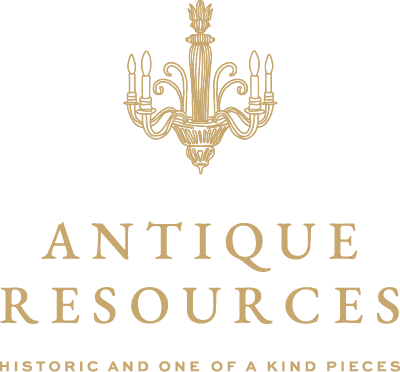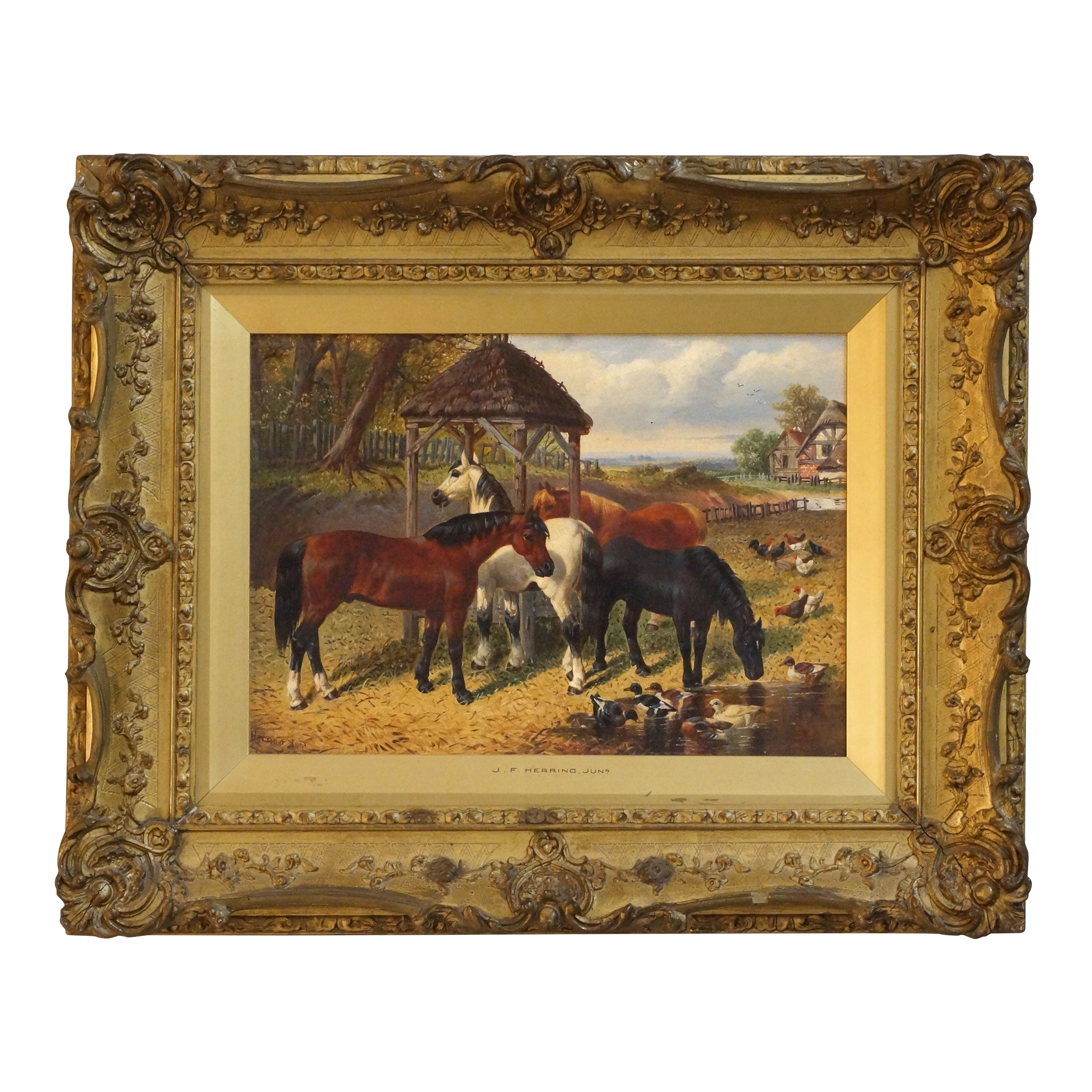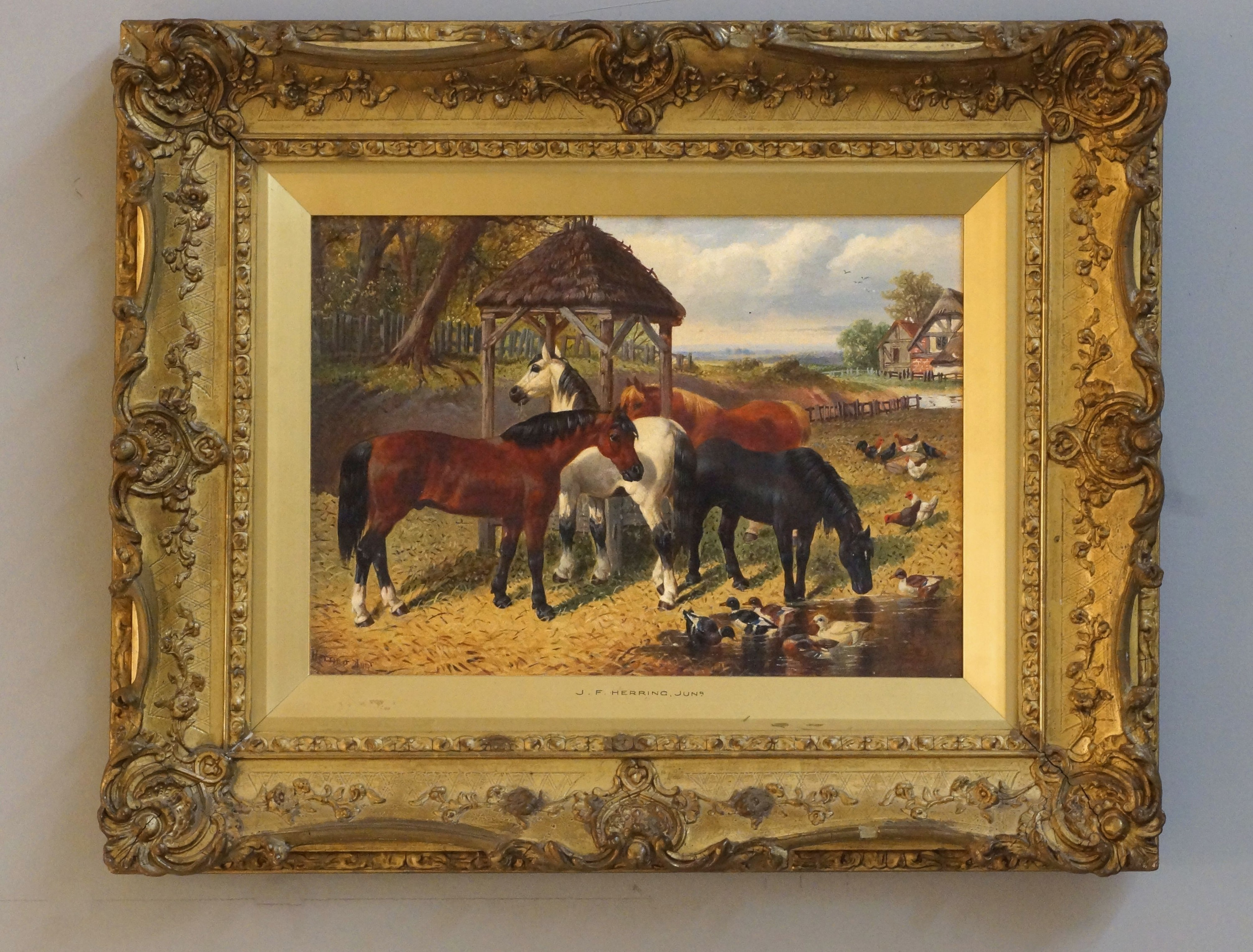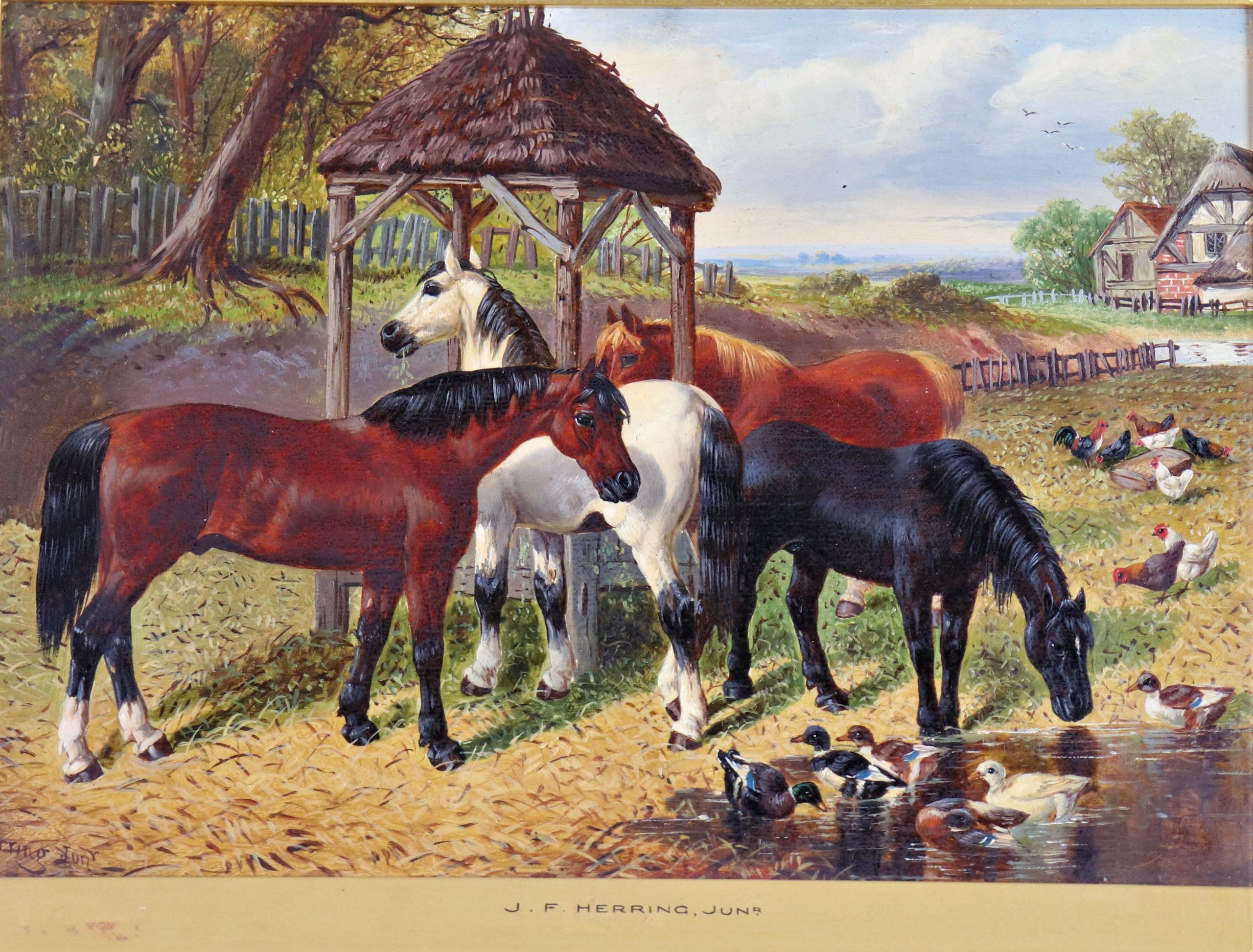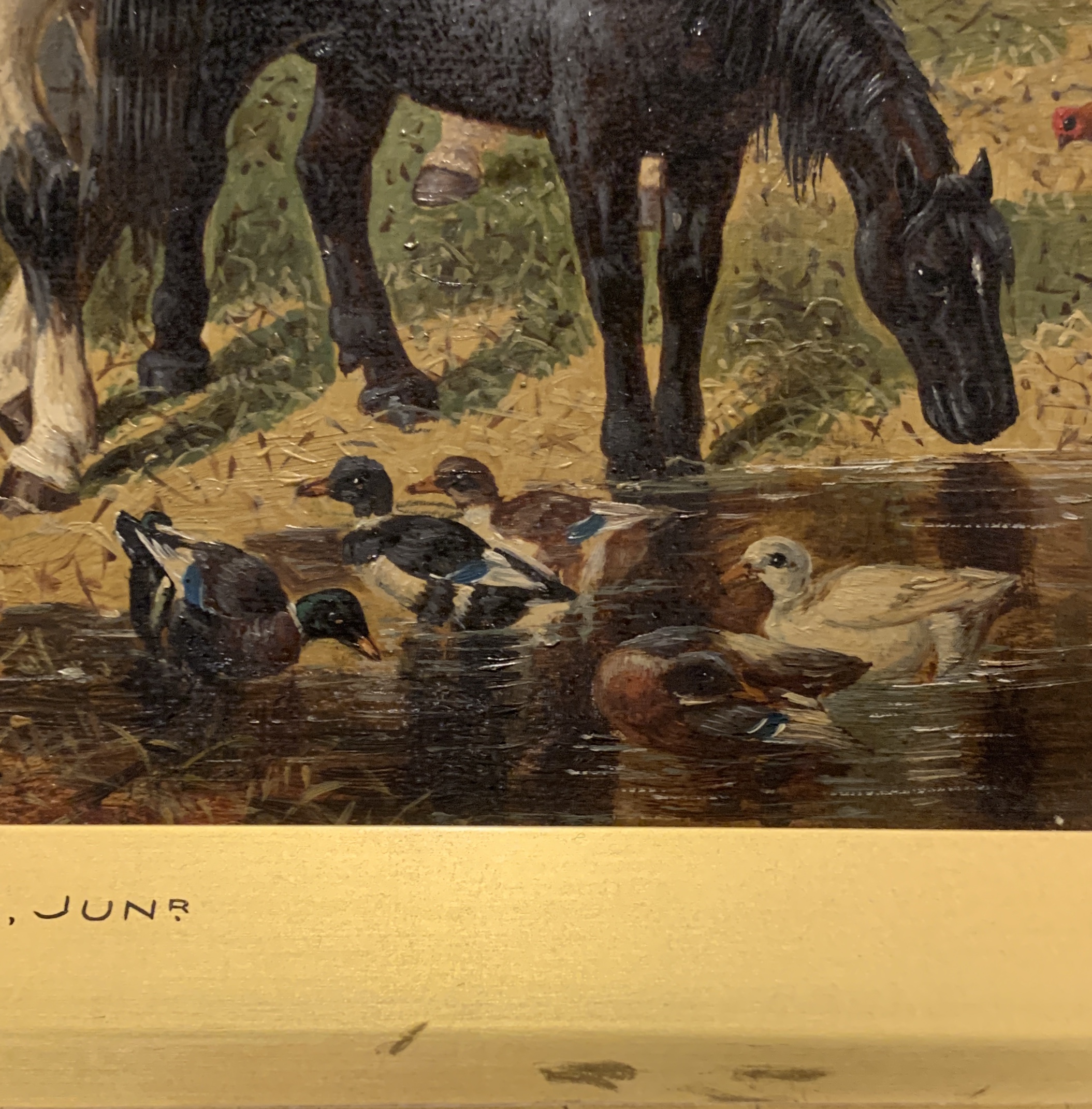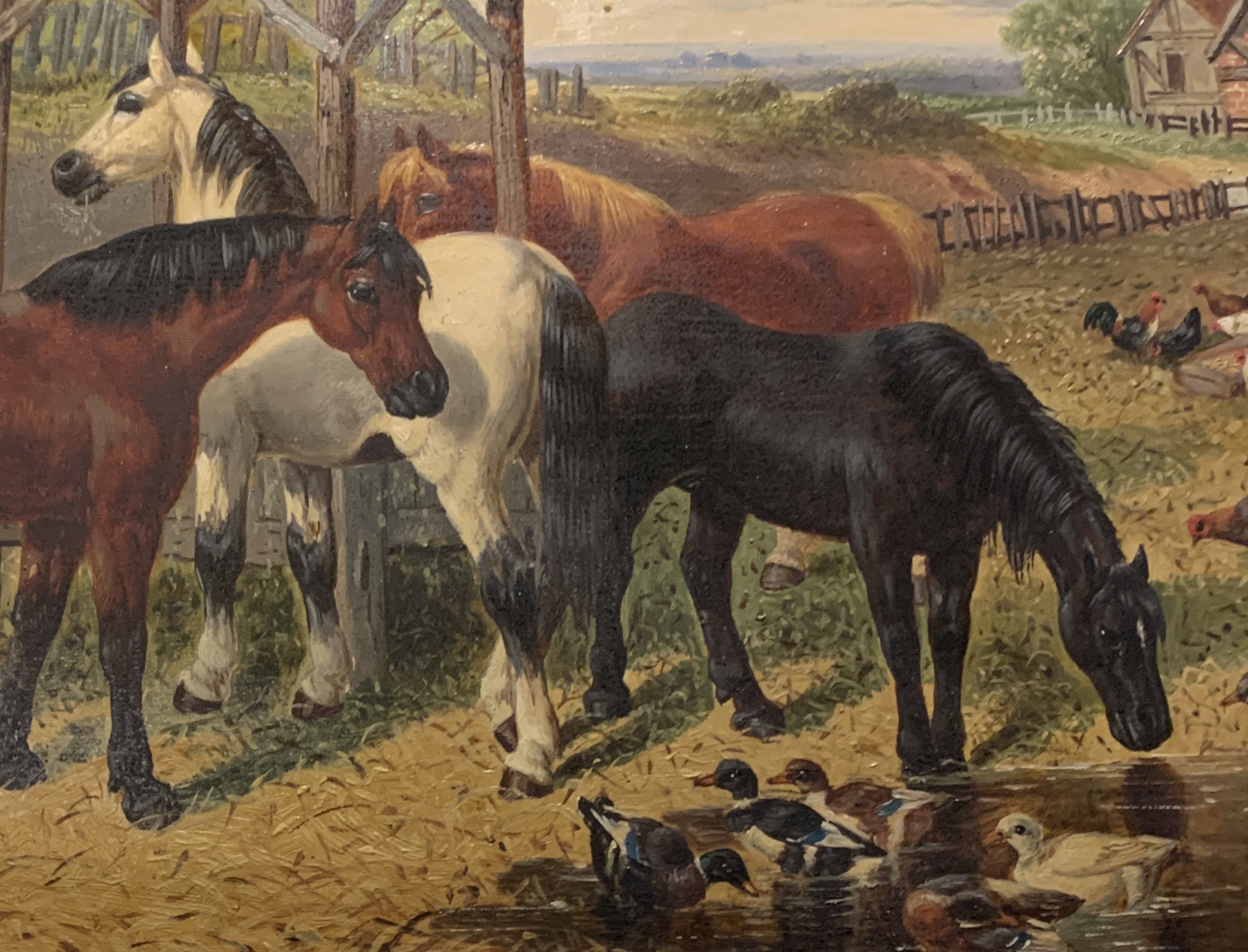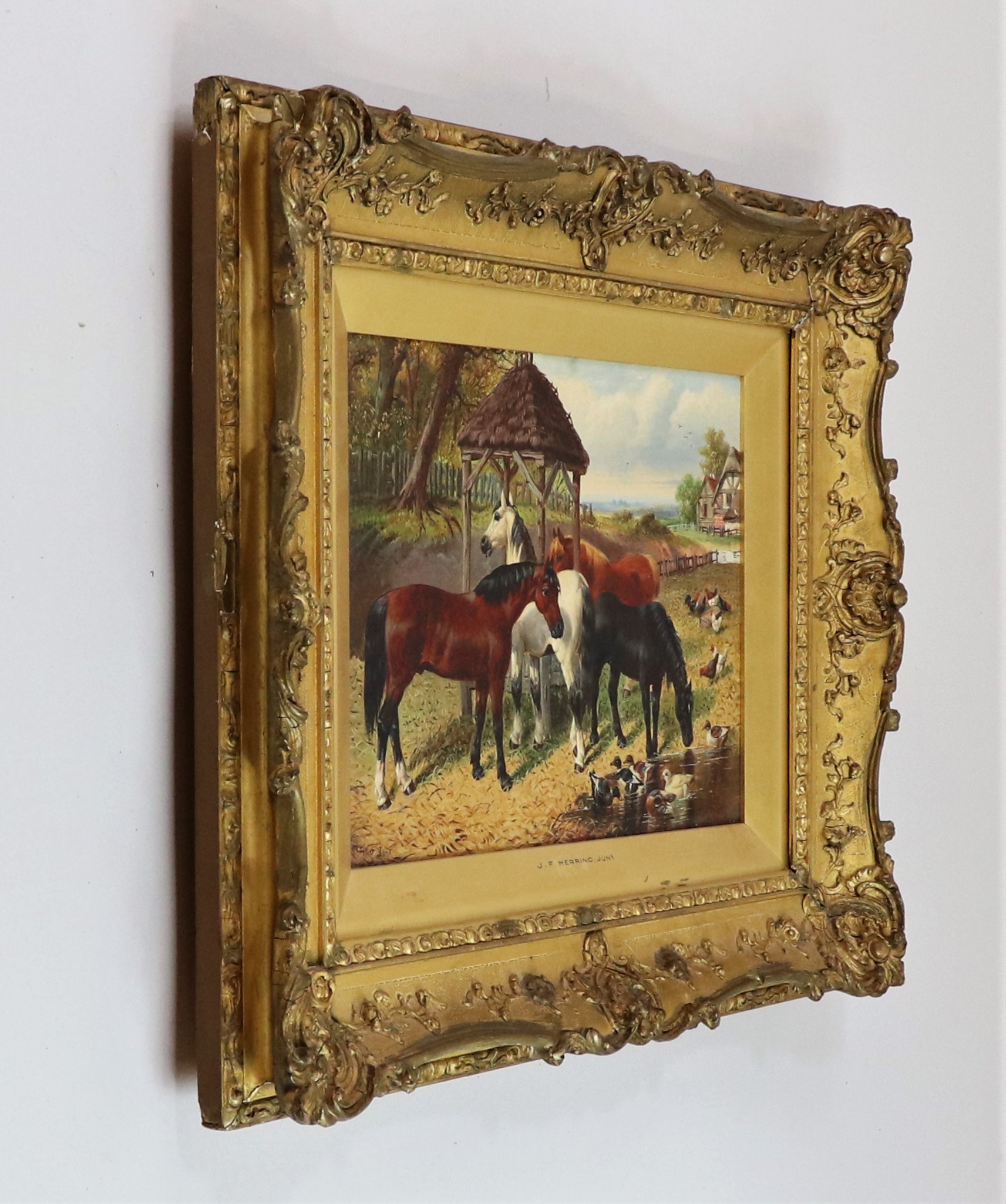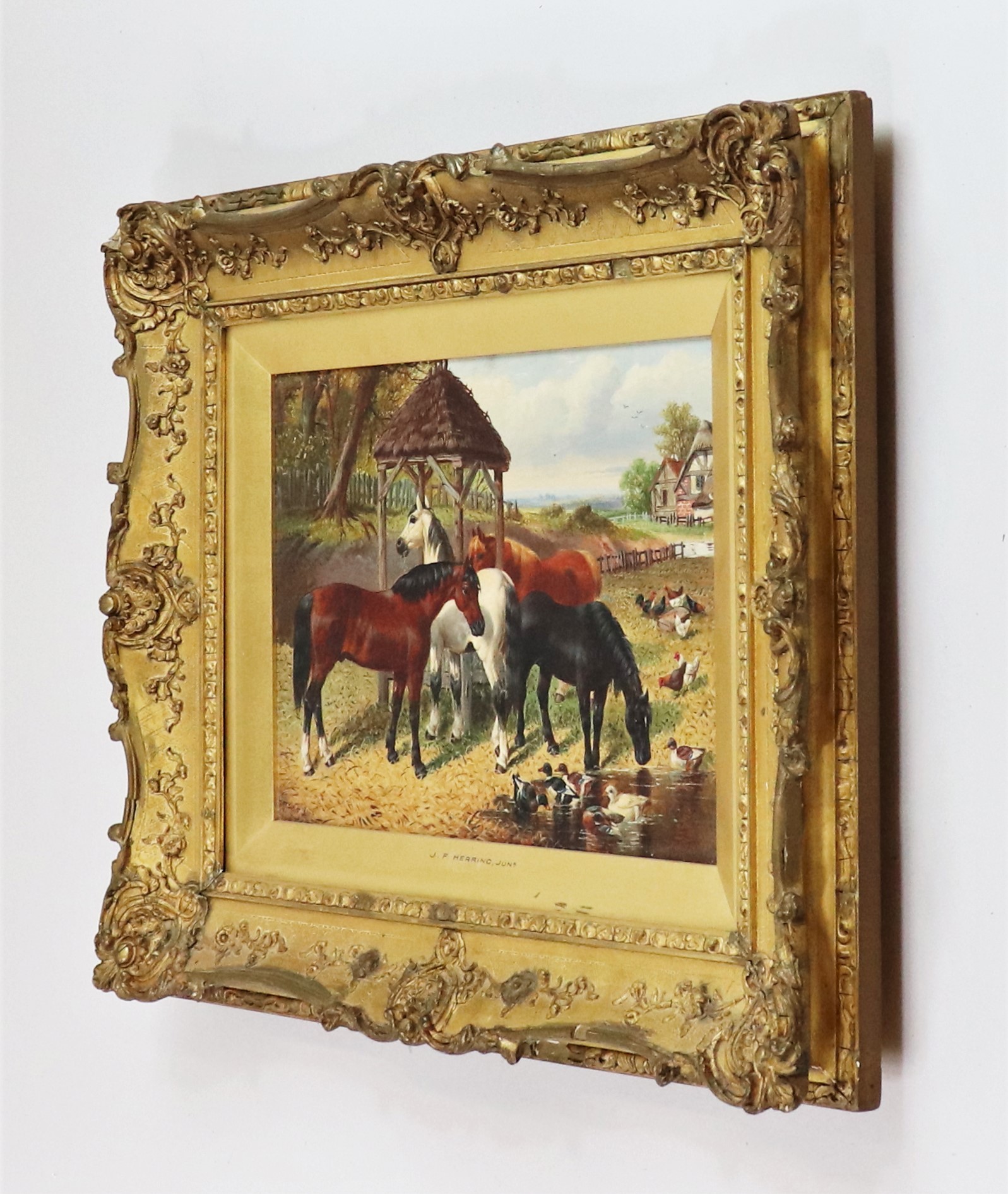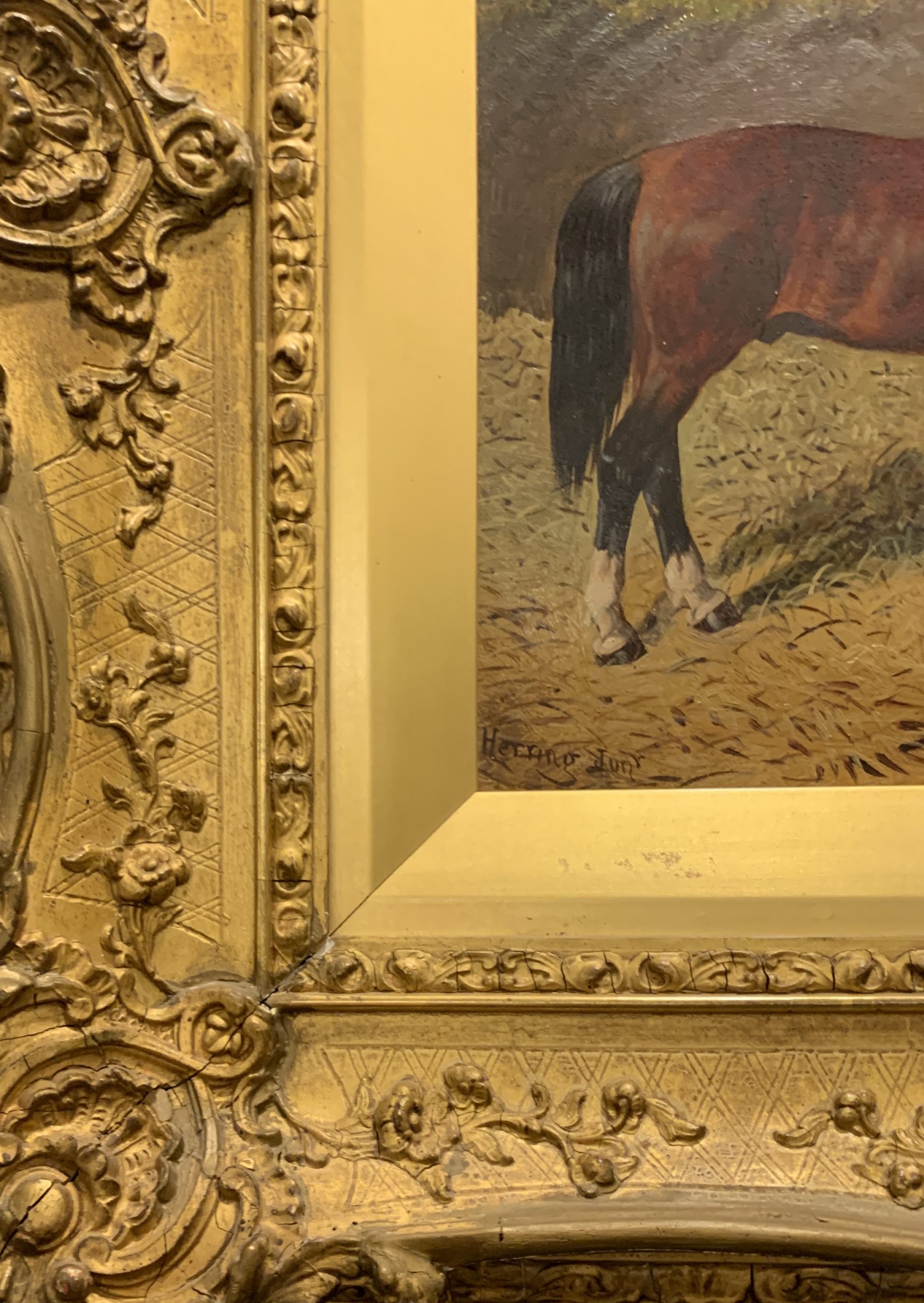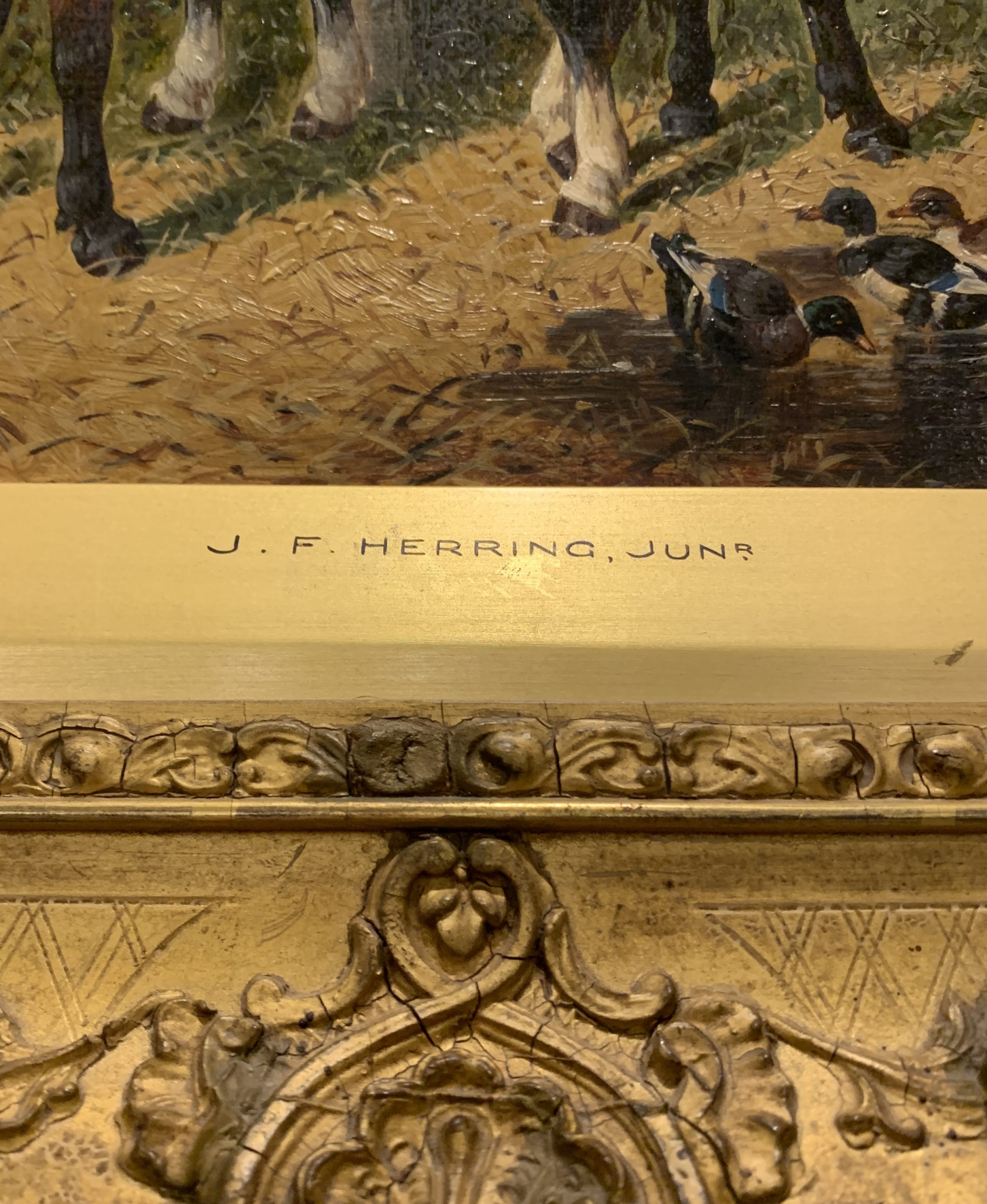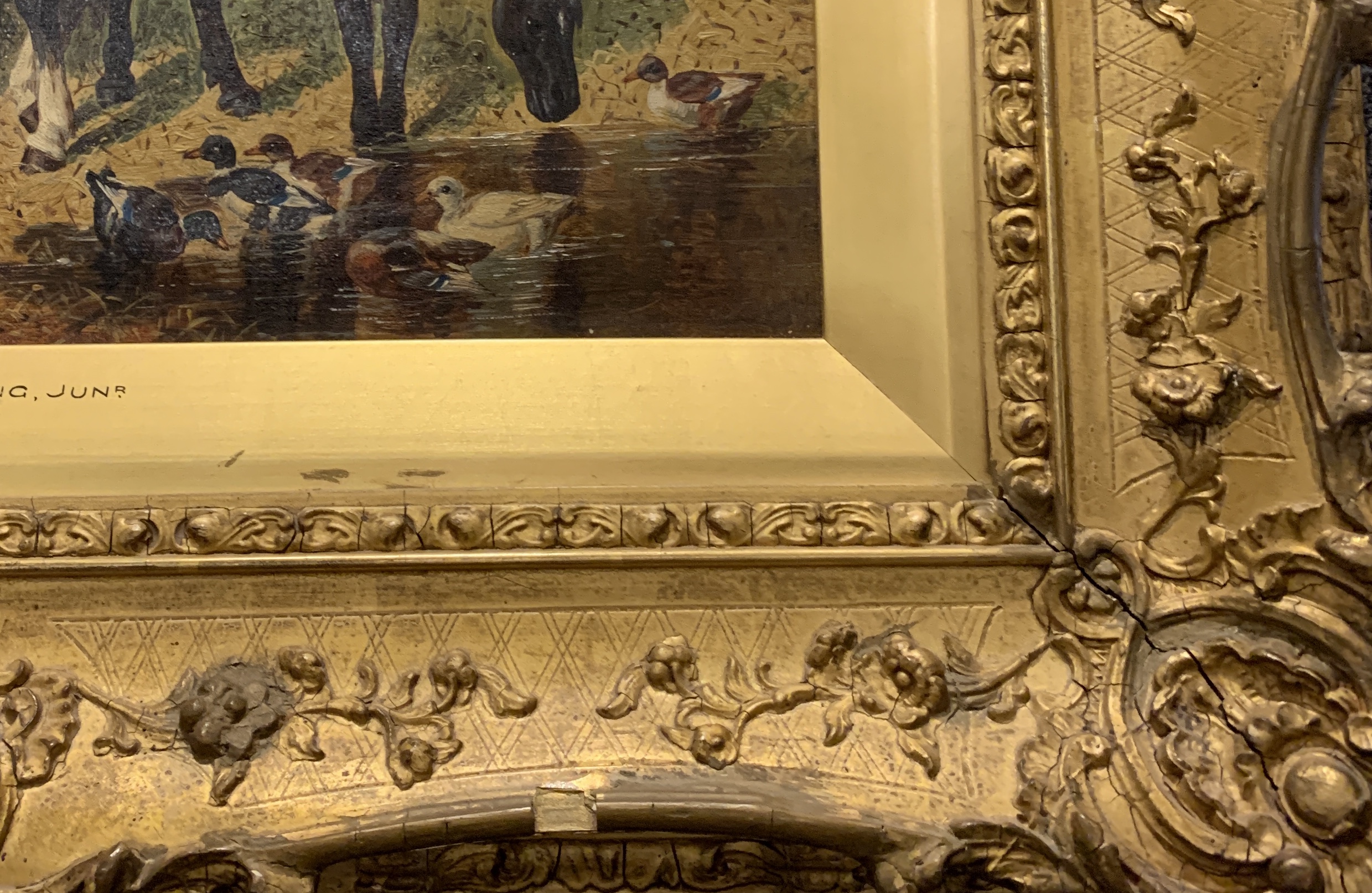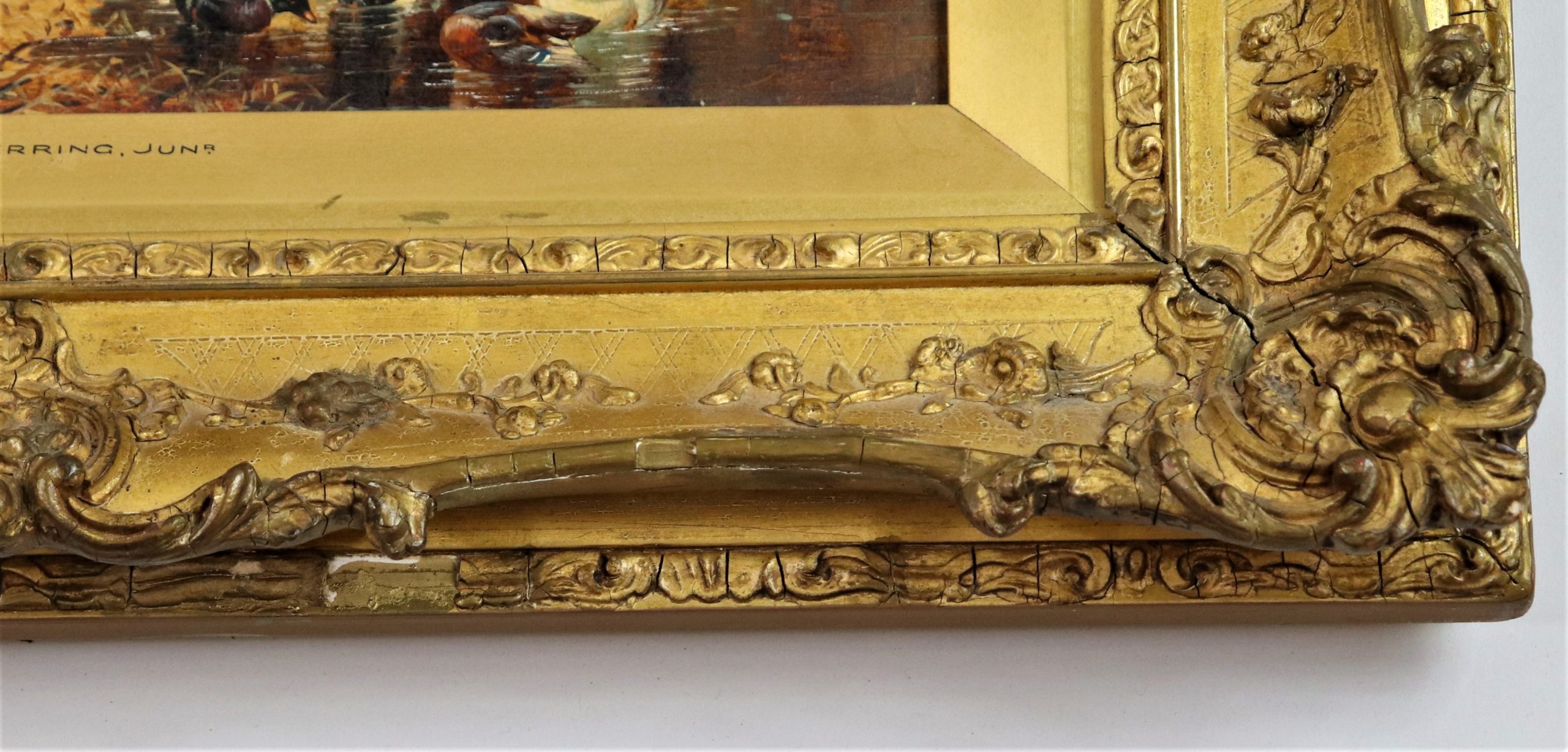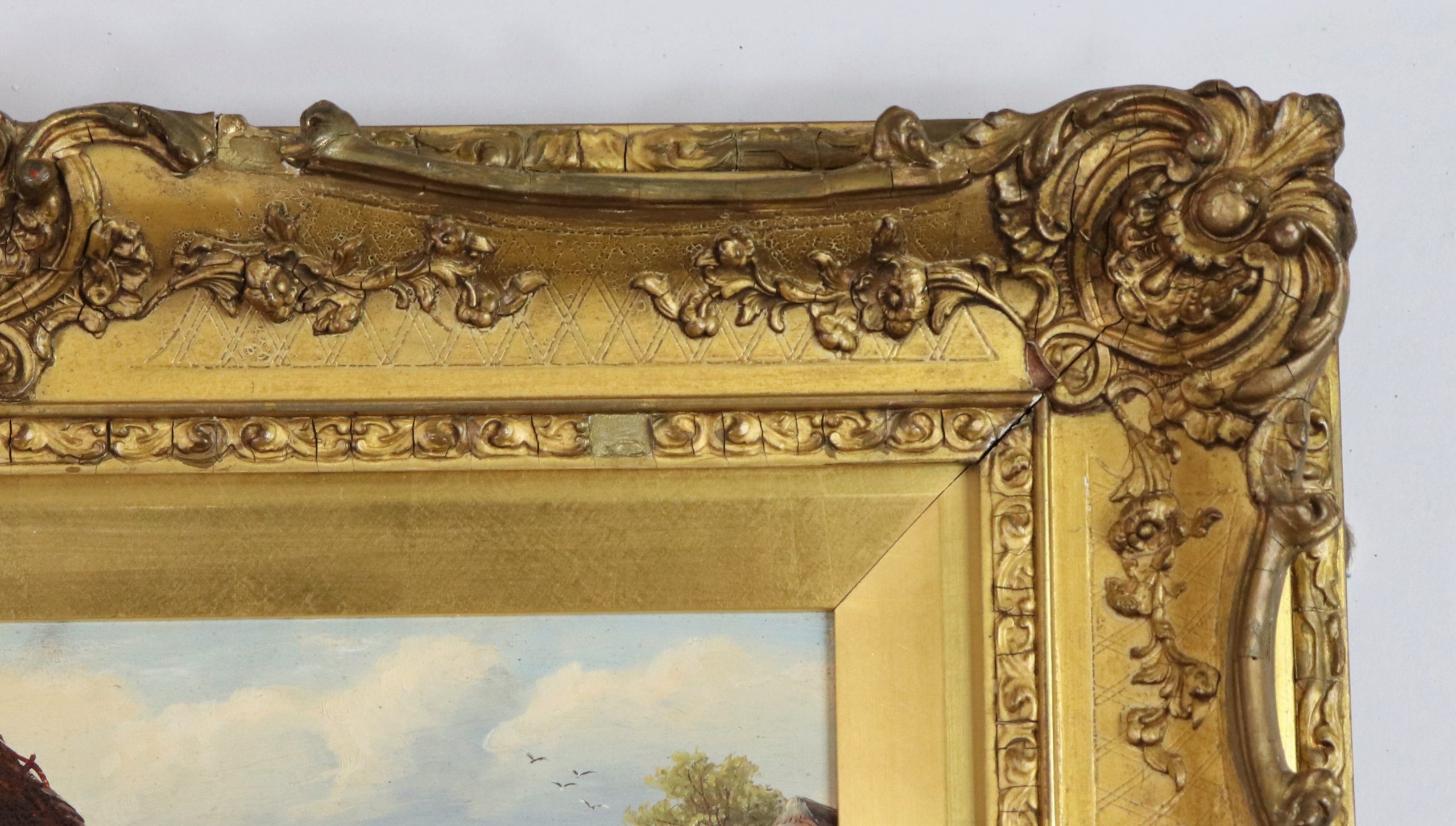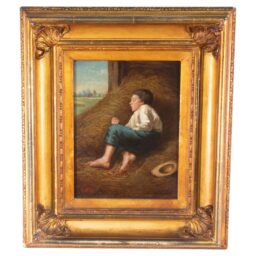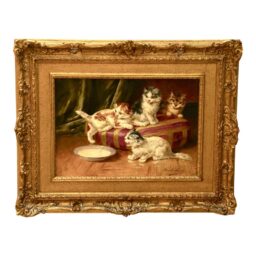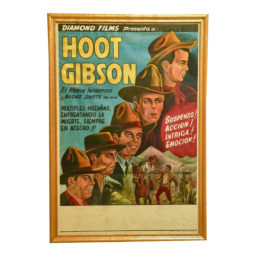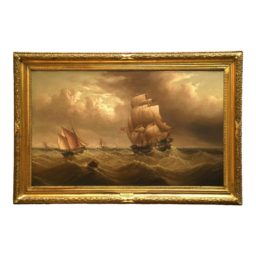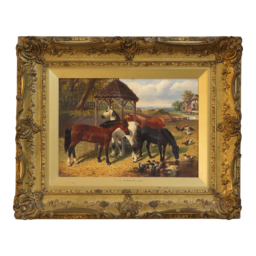Description
Produced by the preeminent John Frederick Herring Jr., this oil on canvas painting, “Horses, Ducks, and Roosters” depicts a pastoral scene characteristic of Victorian nostalgia. Following the explosion of factories and manufacturing towns during the Industrial Era, the English increasingly left their idyllic country homes for cities like London, and yet with these moves there persisted a certain longing for the pastoral picturesque: farm animals, blue skies over long stretches of pasture; the English cottage. Simultaneously, wealthy British landowners were commissioning paintings of their livestock.
John Frederick Herring Sr., the father to the painter of this piece, staged his artistic career on this singular English yearning for country life. In the early nineteenth century, Herring Sr. began to paint hunters and racehorses for the gentry; in 1845, he was appointed Animal Painter to HRH the Duchess of Kent, followed by several commissions from the ruling Queen Victoria, who remained a lifelong patron. Art historians today remember Herring Sr. as one of England’s greatest sporting and equestrian artists, and yet midway through his career, the famed painter began to incorporate the tag “SR” at the end of his signature to distinguish his work from the burgeoning talent of his teenaged son.
Trained by his artist father, Herring Jr. also achieved great acclaim as a painter of country life. His equine art, including this particular painting, was considered by many his most accomplished subject; both father and son painters enjoyed a lifelong love of racehorses. And yet unlike his father, Herring Jr. was also celebrated for his soft color palette and loose brushstrokes. In this painting for example, the viewer may remark on the apparent softness of the horse subjects’ tails and manes, or the overgrown yellow grass underfoot. The distant clouds are delicately brushed with white and blue, the brushstrokes obviously gentle. Even the ducks’ feathered bodies, touched with bands of blue, communicate a certain storybook quality to the painting. The horses’ faces, though true to life, are somehow soft in expression as if reminiscent of their own quiet memories. Herring Jr. was not only an animal painter but deeply empathetic, and it is this unusual empathy that distinguishes his work from his father’s and other Victorian painters.
Highly valued by art collectors and animal lovers alike, this captivating artwork would make a wonderful addition to a home library, living room, or dining area.
With Frame: H: 17.5 in. W: 21.5 in. D: 2.5 in. Weight= 5 lbs.
Canvas: H: 12 in. W: 16 in.
